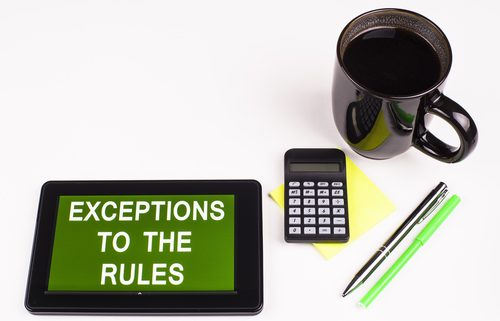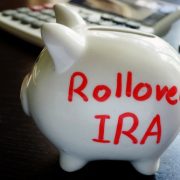There are Exceptions to the Early Withdrawal Penalties in a IRA
Expensive things can crop up out of nowhere, and people do not always have the cash to pay for them. When they run out of options, they turn to their IRAs for help sometimes. If it’s a Self-Directed IRA and you make a withdrawal before you reach the age of 59 1/2, you will be saddled with a 10% early distribution penalty, along with taxes on the amount you take out.
But the IRS acknowledges that unexpected stuff can happen, so make exceptions to the 10% penalty rule. Of course, you will still owe taxes on the withdrawal, but removing the penalty could add up to substantial savings.
Here are those exceptions:
- You have already reached 59 ½ years of age
- You died
- You are disabled
- You have an IRS levy
- You are taking “Substantially Equal Periodic Payments”
- You have expenses for higher education
- You’re a first-time home buyer
- You have substantial medical expenses
- You lost your job but need to pay health insurance premiums
- You are a Qualified Reservist
- A natural disaster has hit you
Some details on the exceptions
The year in which you turn 59 ½ means that you are allowed to take a distribution from your Self-Directed IRA by paying the taxes on the amount you withdraw but no 10% penalty.
After you die, your beneficiaries can request the funds in your IRA and get them without penalty. All they will need is a death certificate to show your Self-Directed IRA custodian at the time they request the withdrawal.
If you become disabled, you will need to provide a physician’s statement or Form 1040 Schedule R “Credit for the Elderly or the Disabled.” You can then use your IRA funds penalty-free to meet your needs.
If you owe back taxes and the IRS is collecting a levy, you can pay what you owe from your Self-Directed IRA, and the distributions will not be subject to the tax penalty.
If you are taking Substantially Equal Periodic Payments from your IRA, you are committing to the IRS to take taxable withdrawals over your life expectancy. You will need tax advice from a professional, but you won’t need to pay a 10% penalty.
You can use your Self-Directed IRA for tuition, fees, books, supplies, equipment, and more when you, your spouse, kids, or even a parent are going to college.
If you have not owned a principal residence in the past two years, you qualify to be a “First-Time Homebuyer,” which means you can use your IRA to help you get a new house. Be aware that there is a lifetime max of $10,000 per IRA owner. Your Self-Directed IRA can also be used to help purchase a home for your spouse, child, or parent. It’s best to seek advice from your tax person before moving forward.
You can use your IRA to pay for unreimbursed medical expenses if they are greater than 10% of your Adjusted Gross Income (AGI).
Losing your job should not result in losing your health insurance. That’s why the IRS allows you to use your IRA to help you pay your premiums as long as you have received unemployment for at least 12 consecutive weeks.
Military reservists can take a penalty-free distribution from their Self-Directed IRA if they have been called to active duty for 180 days or more.
When you are recovering from some natural disasters, you might qualify for penalty-free IRA cash to help you through the emergency.
These exceptions have been added by the IRS to assist you when you need it most. Always discuss your situation with a tax adviser before you pull out the funds, just to make sure you qualify for the penalty-free withdrawal.
Interested in learning more about Self-Directed IRAs? Contact American IRA, LLC at 866-7500-IRA (472) for a free consultation. Download our free guides or visit us online at www.AmericanIRA.com.









